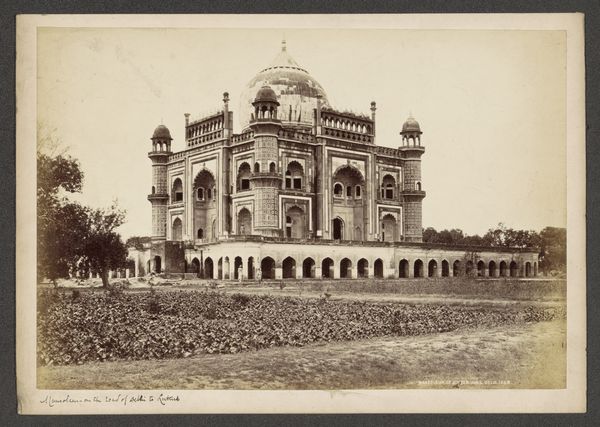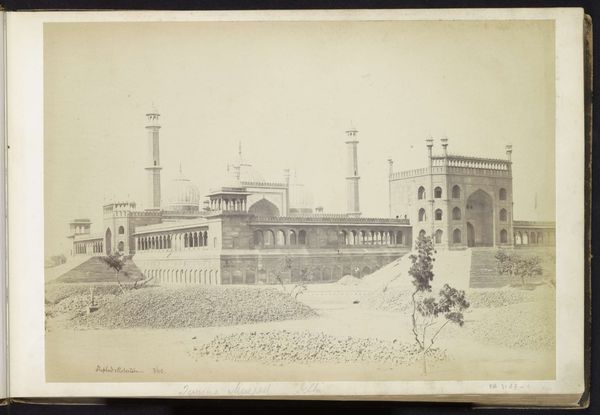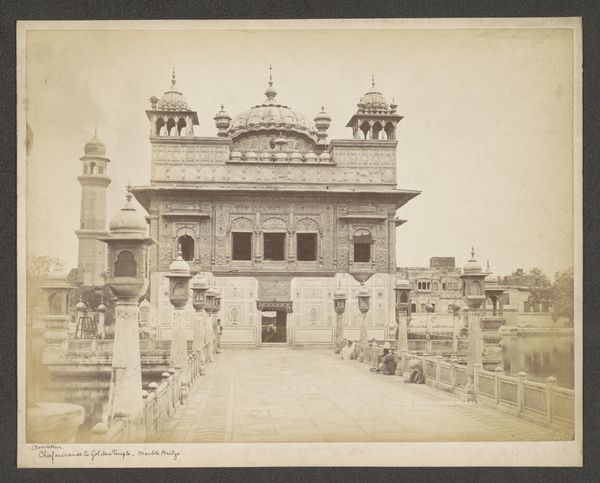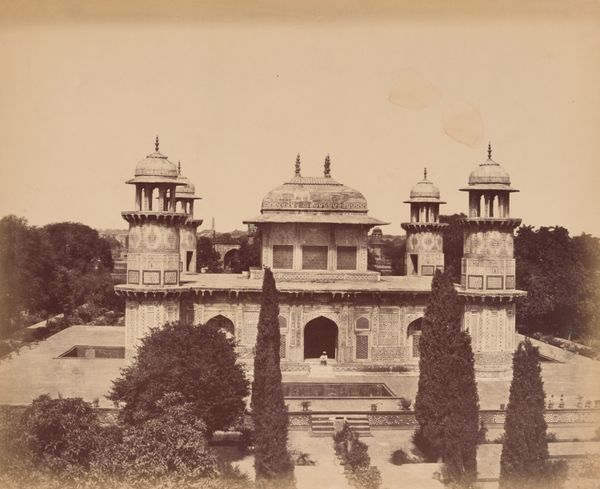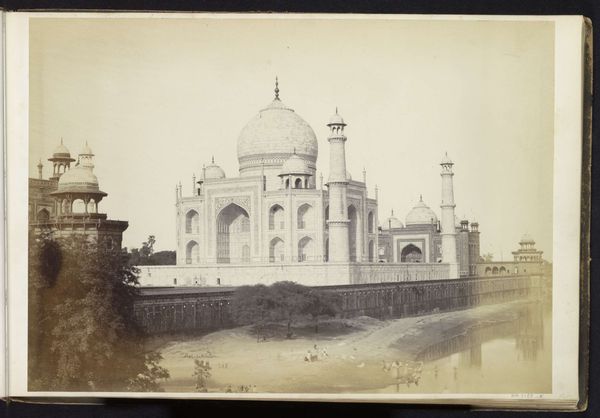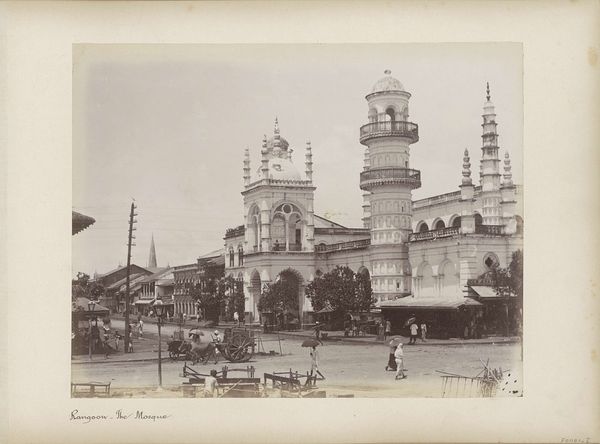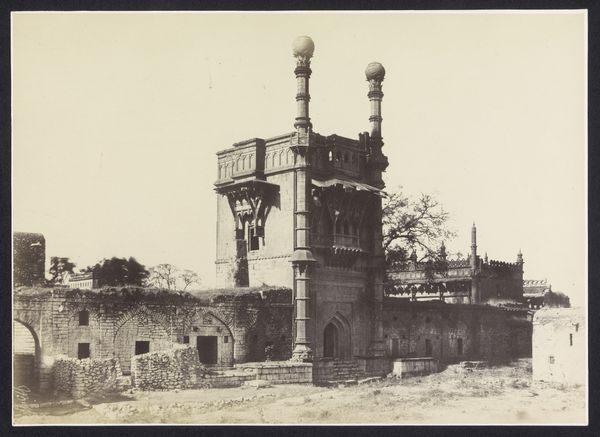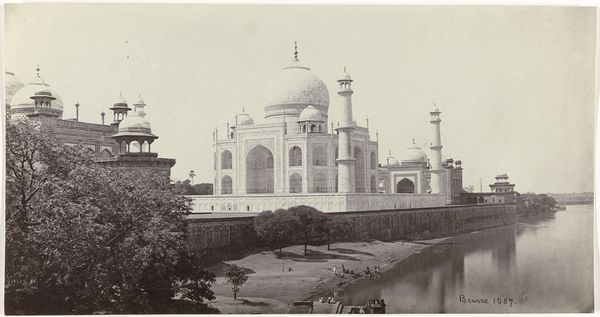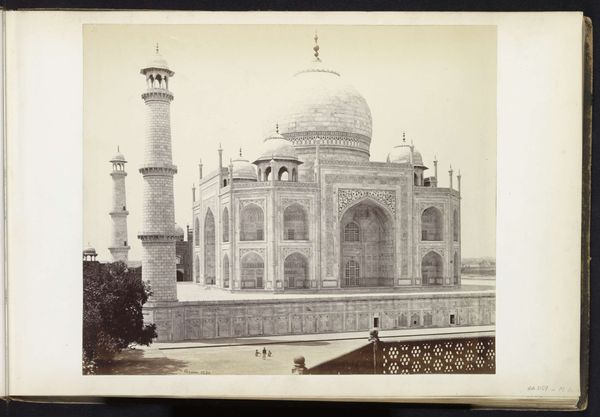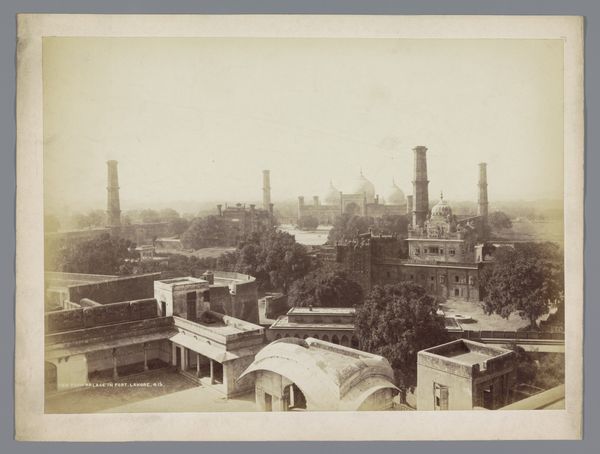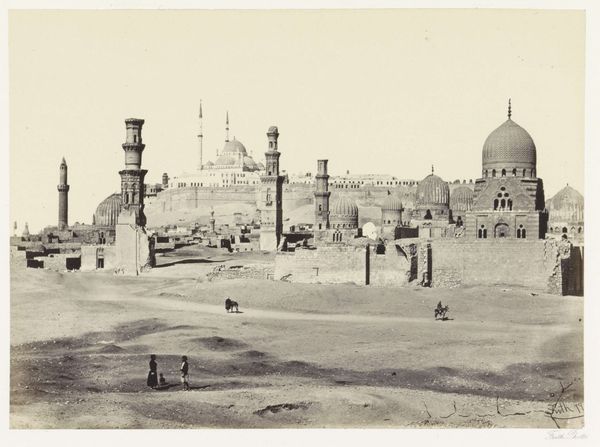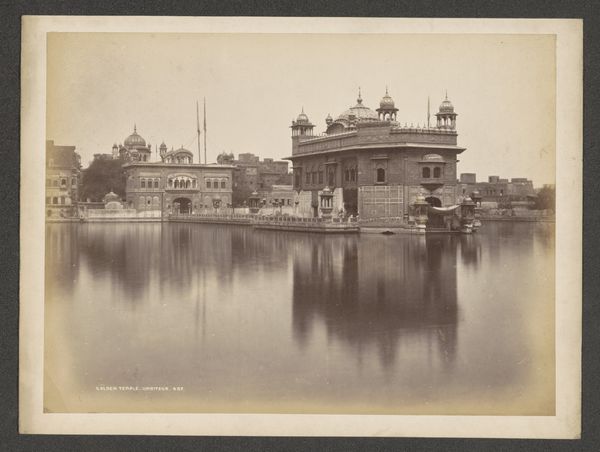
photography, gelatin-silver-print
#
landscape
#
photography
#
orientalism
#
gelatin-silver-print
#
cityscape
#
islamic-art
Dimensions: height 234 mm, width 284 mm
Copyright: Rijks Museum: Open Domain
This photograph of temples and buildings in Lucknow, India was taken by Samuel Bourne, using the wet collodion process. This was a real departure from traditional modes of artmaking, requiring portable darkrooms to develop images right on the spot. Consider the material impact this had on the image itself. The glass plate negative, coated with light-sensitive chemicals, had to be exposed while still wet. The photographer was both artist and technician, deeply involved in the chemistry and timing of the image. The sepia tones and soft focus aren't accidents, but direct results of this method. Bourne, a British photographer, was operating in the context of the British Empire. His work was intended to capture the exoticism of India, to package it for consumption back home. The labor involved – not just Bourne's, but also the local people who assisted him – is less visible, yet crucial to understanding the photograph's place in the history of both art and empire. This image is a powerful reminder that every work of art is the result of a complex set of social and material conditions.
Comments
No comments
Be the first to comment and join the conversation on the ultimate creative platform.
